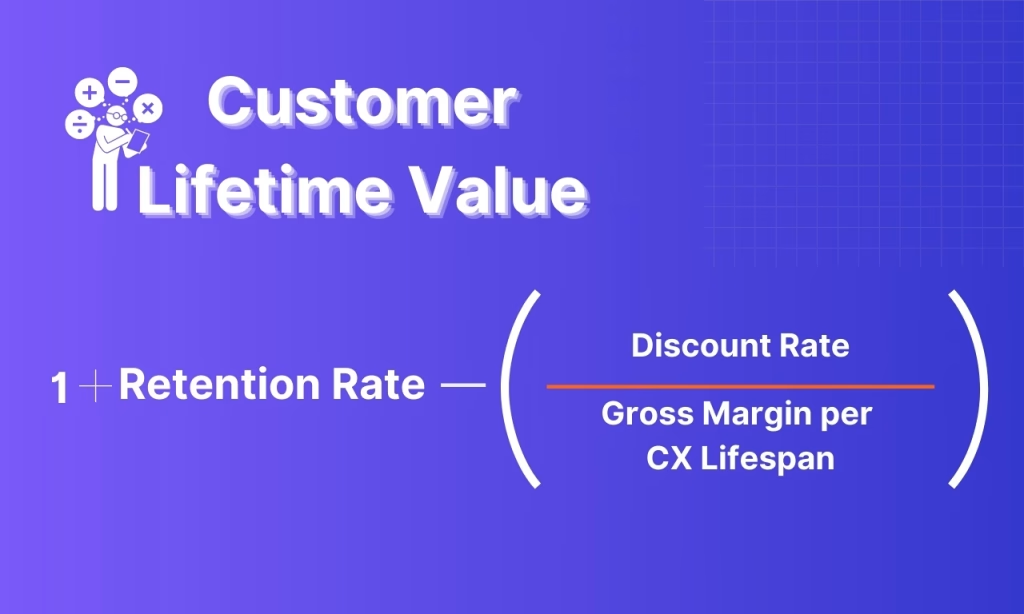Understanding what each customer is worth to your business over time is essential to shaping a profitable growth strategy. This is where Customer Lifetime Value (CLV) becomes indispensable. As competition intensifies and customer acquisition costs continue to rise, brands need to know how much they should invest in retaining each user. In this guide, we’ll walk through everything you need to know about calculating customer lifetime value, explore methods to calculate customer lifetime value, and offer tips to make the metric actionable.
What Is Customer Lifetime Value and Why Does It Matter?
Customer Lifetime Value (CLV) refers to the total revenue a business can reasonably expect from a single customer account throughout their relationship with the company. It’s more than just a financial figure—CLV is a strategic indicator that helps businesses understand long-term profitability and informs everything from marketing budgets to product decisions.
One of the most critical reasons for understanding how to calculate customer lifetime value is to identify the true ROI of your customer acquisition and retention efforts. If you’re spending more to acquire a customer than their lifetime value, your business may grow at the expense of profitability.
CLV also supports segmentation. Not all customers are created equal—some have a higher lifetime value and therefore justify greater marketing and service investment. By calculating customer lifetime value accurately, businesses can focus resources on high-value users while minimizing waste.
Understanding CLV also unlocks smarter automation and targeting in an age of personalization. Rather than treating all users the same, marketers can tailor messaging and offers based on where a customer stands in their predicted value spectrum.
In short, CLV enables more strategic decision-making across marketing, sales, customer support, and product development. It helps businesses move from short-term transactional thinking to long-term customer-centric strategies.
The Core Formula: How to Calculate Customer Lifetime Value?
The simplest way to begin calculating customer lifetime value is with this basic formula:
CLV = Average Purchase Value × Purchase Frequency × Customer Lifespan
Let’s break that down:
- Average Purchase Value (APV): Total revenue / Number of purchases
- Purchase Frequency (PF): Number of purchases / Number of customers
- Customer Lifespan (CL): Average time a customer continues buying from you
So, if a customer spends $50 on average per purchase, buys twice a month, and stays with your brand for 2 years, their CLV would be:
$50 × 2 × 24 = $2,400
This basic approach gives a good starting point but may lack nuance. For greater accuracy, many businesses adopt a more advanced CLV formula that factors in gross margin and discount rates:
CLV = (Customer Revenue – Customer Costs) × Gross Margin ÷ Churn Rate
This refined version considers the cost of serving customers and how long they’re likely to stay, adjusting for future revenue loss due to churn.
When you’re researching how to calculate customer lifetime value more precisely, it’s important to choose the method that aligns with your business model. Subscription businesses, for instance, often use monthly recurring revenue and churn to determine CLV. E-commerce brands may focus more on purchase frequency and product mix.
No matter your approach, calculating customer lifetime value should evolve as your business matures and data becomes more robust.
Tools and Data You Need for Accurate CLV Calculation
Accurate CLV measurement relies heavily on good data. Even the most sophisticated formula won’t yield actionable insights without clean, up-to-date information. Here are the key data points you need when calculating customer lifetime value:
- Customer transaction history
- Acquisition cost per channel
- Average customer tenure or retention
- Churn rate and repurchase
- Gross margin per product or
Modern CRMs and analytics platforms like Salesforce, HubSpot, Mixpanel, and Google Analytics can provide most of this data. Customer data platforms (CDPs) like Segment or Amplitude also enable tracking real-time user behavior across touchpoints, giving you better signals on predicted retention.
In terms of tools, Excel or Google Sheets can handle basic calculations, but businesses scaling their operations often move to tools that automate and refine the CLV model. Platforms like ProfitWell, Baremetrics, and Custora offer built-in CLV features with predictive capabilities.
Machine learning and AI are also playing a larger role. By using predictive models, brands can analyze behavioral data and market dynamics to estimate future CLV more reliably, even for new users. This is particularly useful in fast-changing verticals where historical patterns aren’t enough.
If your goal is to master how to calculate customer lifetime value and make it a living, breathing part of your strategy, the right tooling is just as important as the right formula.
How to Use CLV Insights to Drive Smarter Business Decisions
Knowing your CLV is useful, but knowing how to act on it is where the real value lies. Once you’ve mastered calculating customer lifetime value, here’s how you can put it to work across the organization.
1. Marketing Budget Optimization
Compare CLV to Customer Acquisition Cost (CAC). If you’re spending $300 to acquire a customer with a CLV of $600, you have a 2:1 ratio. Ideally, you want to aim for at least a 3:1 ratio. This comparison helps you determine if your channels are profitable and where to scale back.
2. Personalized Engagement Strategies
Segment users by CLV tiers. High-CLV customers may receive loyalty perks, early access, or dedicated account managers. Lower-CLV users might be targeted with cost-effective automation to improve efficiency. By aligning effort with value, you improve ROI.
3. Product and Pricing Optimization
Look at the behaviors and preferences of high-CLV customers. What do they buy? How often? What features do they use? This insight helps you refine offerings to align with what drives retention and repeat purchases.
4. Customer Success and Support Strategy
Deploy more proactive support to accounts with higher lifetime value. Invest in onboarding, retention nudges, and usage training to reduce churn among your most valuable users.
The goal is not just to understand how to calculate customer lifetime value, but to embed those insights into daily decisions from campaign planning to product development to support workflows.
Common Mistakes and How to Improve Your CLV Strategy
While many businesses focus on calculating customer lifetime value, few do it consistently well. Avoiding these common pitfalls can help you get more value from your CLV metrics:
Mistake 1: Using Static Models
Customer behavior evolves, and so should your CLV calculations. Avoid relying on outdated averages. Update your models quarterly and use predictive analytics where possible.
Mistake 2: Ignoring Churn
CLV assumes a customer remains active. Your predictions will be off if your churn rate is high or inconsistent. To improve CLV accuracy, focus on tracking and reducing churn.
Mistake 3: Misaligned Metrics
Don’t silo CLV within the marketing team. It should be a shared KPI across product, support, finance, and executive leadership. Everyone contributes to lifetime value.
Mistake 4: Not Acting on CLV
Calculating customer lifetime value is only helpful if you use it to drive change. Use it to prioritize accounts, improve touchpoints, and inform product decisions.
To truly improve performance, go beyond how to calculate customer lifetime value and focus on how to operationalize the data. Tie your strategy to lifecycle stages, build automation around behaviors, and continuously test assumptions.
Conclusion
Understanding how to calculate customer lifetime value gives your business a powerful edge. It brings long-term clarity to your growth model, aligns acquisition with retention, and empowers teams to work toward common outcomes.
As you move into 2025 and beyond, the thriving brands won’t be the ones chasing vanity metrics, they’ll build deep, data-driven relationships based on real value.
Book a demo today and see how our AI-powered nudges and engagement tools can help you build a smarter, more profitable customer journey.







